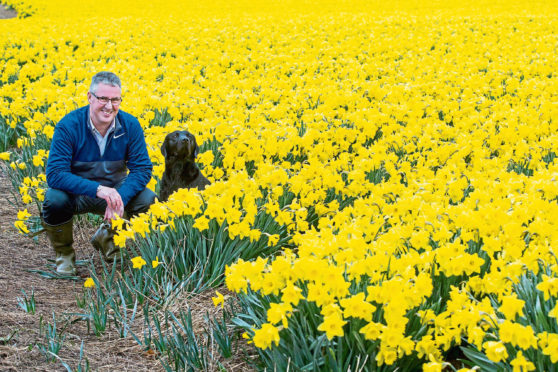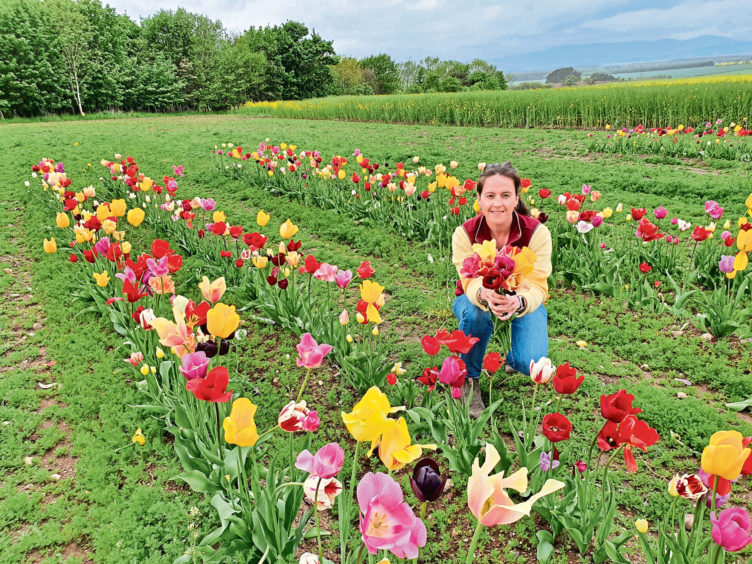A group of Scottish flower growers has joined forces to promote locally grown blooms to shoppers.
The group, supported by the Soil Association Scotland-led Rural Innovation Support Service (RISS), aims to encourage shoppers to buy cut flowers that are grown in, and not flown into, Scotland.
It comprises eight flower growers across Scotland and Montrose-based farmers’ co-operative Grampian Growers.
The co-op’s managing director, Mark Clark, has created a link between the group and a horticulture industry group, set up to increase knowledge of the sector among policy makers including government ministers.
“Unless you’re driving up the A90 in April or May and notice the yellow fields, most people in Scotland are not aware that we grow daffodils,” said Mr Clark.
He said the co-op’s growers produce 1,200 acres of daffodils each year across 12 farms in Perthshire, Angus and south Aberdeenshire.
“Along with others in the RISS group, I am passionate about flowers and bulbs, but as an industry, it’s very much unknown – there is no association, no representative body,” added Mr Clark.
“There is little data on the cut flower sector in Scotland, but the big florists say there’s not enough local supply for weddings and events, even during Covid, and they’re desperate to source locally. That supply chain doesn’t exist yet.”
Laurencekirk grower Kym McWilliam whose family runs a pick-your-own flowers field, said she hoped the new group would help create a voice for growers and a platform to encourage people to buy Scottish flowers.
She said: “People don’t believe me when I say I’m one of 10 large-scale flower growers in Scotland – they don’t think flowers are grown in Scotland, but I think the UK flower industry still has a lot to give.”
She said there was an opportunity to displace imported flowers with Scottish-grown ones – at present about 90% of the cut flowers sold in the UK are imported, with most grown in African and shipped to the UK via Holland.
Ms McWilliam added: “Our flowers are grown not flown – you have to think about the carbon footprint. If we can chip away at the imported figure, so that even a quarter of flowers are grown in the UK, that would be big.”
Arianne Knowles, who runs Flourish Ayrshire from her 14-acre smallholding near Cumnock, said there was an appetite among florists for Scottish flowers.
She said: “Through selling at a local farm shop I’ve met a local florists who wants to reduce flower miles and loves the idea of sourcing close by.
“There’s a tale of old that somehow British flowers are wildflowers that wither quickly, but actually they have an excellent vase life.
“The imported ones you buy only last because they’re treated with a load of chemicals.”
Mr Clark said he hoped the new industry group would help create economies of scale when creating routes to market, for example, or sourcing labour.
He said: “It’s expensive for small producers to transport to wholesale or retail.
“It requires temperature control, but if we do it through a transport hub we reduce costs. Same with labour.”











